Human Orbital Spaceflights
![]()
International Flight No. 230STS-111Endeavour (18)110th Space Shuttle missionUSA |
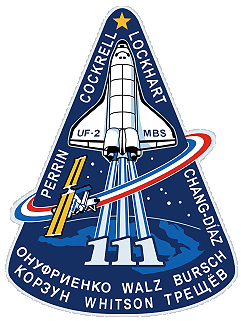 |
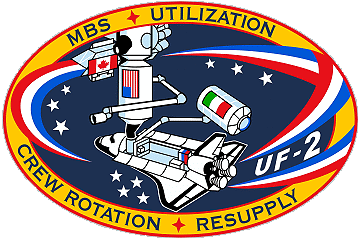 |
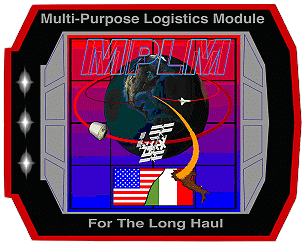 |
||
![]()
Launch, orbit and landing data
walkout photo |
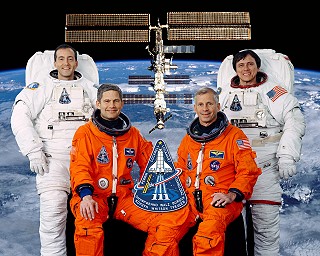 |
||||||||||||||||||||||||||||||||
alternative crew photo |
|||||||||||||||||||||||||||||||||
alternative crew photo |
|||||||||||||||||||||||||||||||||
alternative crew photo |
Crew
| No. | Surname | Given names | Position | Flight No. | Duration | Orbits | |
| 1 | Cockrell | Kenneth Dale "Taco" | CDR, IV, RMS | 5 | 13d 20h 34m 52s | 217 | |
| 2 | Lockhart | Paul Scott "Paco" | PLT, RMS | 1 | 13d 20h 34m 52s | 217 | |
| 3 | Perrin | Philippe | MS-1, EV-2 | 1 | 13d 20h 34m 52s | 217 | |
| 4 | Chang-Diaz | Franklin Ramon | MS-2, EV-1, FE | 7 | 13d 20h 34m 52s | 217 | |
| 5 | Whitson | Peggy Annette | MS-3 | 1 | 184d 22h 14m 23s | 2910 | |
| 6 | Korzun | Valeri Grigoriyevich | MS-4 | 2 | 184d 22h 14m 23s | 2910 | |
| 7 | Treshchyov | Sergei Yevgeniyevich | MS-5 | 1 | 184d 22h 14m 23s | 2910 |
Crew seating arrangement
|
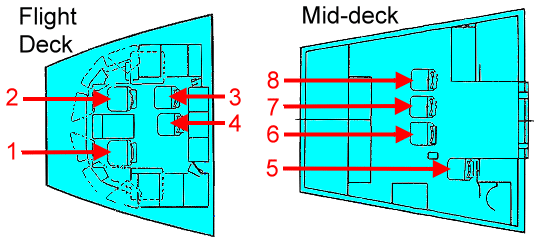 |
|
||||||||||||||||||||||||||||||||||||
Backup Crew
|
 |
||||||||||||||||||||
Hardware
| Orbiter : | OV-105 (18.) |
| SSME (1 / 2 / 3): | 2050-2 (3.) / 2044-2 (7.) / 2054-2 (4.) |
| SRB: | BI-113 / RSRM 84 |
| ET: | ET-113 (SLWT-19) |
| OMS Pod: | Left Pod 04 (25.) / Right Pod 01 (32.) |
| FWD RCS Pod: | FRC 5 (18.) |
| RMS: | 303 (16.) |
| EMU (launch): | EMU No. 3013 (PLSS No. 1013) / EMU No. 3011 (PLSS No. 1011) |
| EMU (landing): | EMU No. 3014 (PLSS No. 1014) / EMU No. 3015 (PLSS No. 1015) |
Flight
|
Launch from Cape Canaveral (KSC) and
landing on Edwards AFB, Runway 22. The launch was scrubbed on May 30, 2002 and on May 31, 2002 due to bad weather in Florida. A new International Space Station crew, the fifth flight of an Italian-built Multi-Purpose Logistics Module (MPLM) and three spacewalks are major elements of the STS-111 (ISS-14-UF2, MPLM) flight of Endeavour. Top priorities of the STS-111 (UF-2) mission of Endeavour were rotation of the International Space Station Expedition 4 and Expedition 5 crews. The space station's Expedition 5 crew was Russian Commander Valeri Korzun, Astronaut Peggy Whitson and Cosmonaut Sergei Treshchyov. Crewmembers extended a continuous human presence aboard the space station that began when the Expedition 1 crew arrived on November 02, 2000. They replaced the Expedition 4 crew, Russian Commander Yuri Onufriyenko and Astronauts Carl Walz and Daniel Bursch. That crew was brought to the station on Endeavour's STS-108 flight launched December 05, 2001, and returned to Earth on Endeavour. The Italian MPLM named Leonardo made its third visit to the space station. It first flew on STS-102 in March 2001 and again on STS-105 in August 2001. It was one of three virtually identical modules that served as pressurized moving vans, bringing equipment and supplies to the space station. A sister module named Raffaello had visited the station twice, on STS-100 in April 2001 and on STS-108 in December 2001. Leonardo was lifted out of Endeavour's payload bay and attached directly to the station's Unity node for the unloading of its cargo. The MPLM brought to the station contents of eight resupply stowage racks, five resupply stowage platforms, two international standard payload racks and two scientific racks for the U.S. laboratory Destiny. One of the scientific racks was EXPRESS (for Expedite the Processing of Experiments to the Space Station) Rack No. 3. The other was the Microgravity Science Glovebox. On flight day 2 the crewmembers checked out the Docking Mechanism, the orbiter-based rendezvous tools and systems, the EMUs (spacesuits), made preparations for transfer, checked out the shuttle's robotic arm, and used its cameras to do a payload bay survey. Endeavour's rendezvous and docking with the International Space Station began with the precisely timed launch of the shuttle on a course for the station. During the first two days of the mission, periodic engine firings gradually brought Endeavour to a point about 9 ½ statute miles (24.6 km) behind the station, the starting point for a final approach to the station. About 2 ½ hours before the scheduled docking time on flight day three, Endeavour reached that point about 50,000 feet - 9 ½ statute miles (24.6 km) - behind the ISS. At that time, Endeavour's jets were fired in a Terminal Intercept (TI) burn to begin the final phase of the rendezvous. Endeavour closed the final miles to the station during the next orbit of Earth. As Endeavour closed in, the shuttle's rendezvous radar system began tracking the station and providing range and closing rate information to the crew. During the approach toward the station, the shuttle had an opportunity to conduct four, small mid-course corrections at regular intervals. Just after the fourth correction was completed, Endeavour reached a point about half a mile below the station. At that time, about an hour before the scheduled docking, Commander Kenneth Cockrell took over manual control of the approach. Kenneth Cockrell slowed Endeavour's approach and flew to a point about 600 feet (182.9 meters) directly below the station, from which he began a quarter-circle of the station, slowly moving to a position in front of the complex, in line with its direction of travel. During the rendezvous, Pilot Paul Lockhart assisted Kenneth Cockrell in controlling Endeavour's approach. Mission Specialists Philippe Perrin and Franklin Chang-Diaz also played key roles in the rendezvous, with Philippe Perrin overseeing rendezvous navigation displays on a laptop computer aboard Endeavour and Franklin Chang-Diaz overseeing operations of the shuttle's docking system. Expedition 5 Flight Engineer Peggy Whitson also assisted, using a handheld laser ranging device to provide supplemental range and closing rate information to Kenneth Cockrell. Kenneth Cockrell flew the quarter-circle of the station, starting at a point 600 feet (182.9 meters) below, while slowly closing in on the complex, stopping at a point a little over 300 feet (91.4 meters) directly in front of the station. From that point, he began slowly moving directly toward the station's shuttle docking port - moving at a speed of about a tenth of a mile per hour (0.16 km/h). Using a view from a camera mounted in the center of Endeavour's docking mechanism as a key alignment aid, Kenneth Cockrell precisely centered the docking ports of the two spacecraft. Kenneth Cockrell flew to a point where the docking mechanisms were 30 feet (9.14 meters) apart, and paused to check the alignment before proceeding to docking. For Endeavour's docking on June 07, 2002, Kenneth Cockrell maintained the shuttle's speed relative to the station at about one-tenth of a foot per second (3 centimeters per second), and kept the docking mechanisms aligned to within three inches of one another. When Endeavour made contact with the station, preliminary latches automatically attached the two spacecraft together. Immediately after Endeavour docked, the shuttle's steering jets were deactivated to reduce the forces acting at the docking interface. Shock absorber-type springs in the docking mechanism dampened any relative motion between the shuttle and the station. Once relative motion between the spacecraft had stopped, Franklin Chang-Diaz secured the docking mechanism, sending commands for Endeavour's mechanism to retract and close a final set of latches between the shuttle and station. After docking and Orbiter Docking System (ODS) preparation, the crew opened the ODS hatch and the ISS and shuttle crews meet for the first time in space. The ISS crew gave a safety briefing to the shuttle crew. Spacewalking equipment and one of the custom seat liners for the Soyuz (of Sergei Treshchyov) crew return vehicle were transferred later in the day. The next day the two remaining Expedition 5 crewmembers Valeri Korzun and Peggy Whitson transferred their seat liners to the Soyuz. The crew also checked the MPLM environment, and installed, activated and outfitted the vestibule, and prepared for entering the MPLM. Some equipment and supplies were transferred from the middeck to the station and other cargo was moved from the station to the shuttle for return to Earth. Flight day five consisted of MPLM transfer preparations and handover operations between ISS Expedition 4 and Expedition 5 commanders and the Flight Engineers. During the flight of STS-111 one of the four control moment gyroscopes failed, but this resulted no safety problems. The first EVA by Franklin Chang-Diaz and Philippe Perrin was performed on June 09, 2002 (7h 14m) to install a Power and Data Grapple Fixture to the station's P6 truss, to gather six micrometeoroid debris shields from the shuttle cargo bay and to store them temporarily on the PMA-1. Franklin Chang-Diaz conducted a visual and photographic inspection of the failed gyroscope. The first spacewalk began with the installation of a Power and Data Grapple Fixture (PDGF) for the station's robotic arm on the complex's P6 truss. The PDGF will allow the robotic arm to grip the P6 truss for future station assembly operations. Franklin Chang-Diaz and Philippe Perrin installed the new fixture about halfway up the P6 truss, the vertical structure that currently supports the station's set of large U.S. solar arrays. The grapple fixture will be used during a later assembly flight when the robotic arm must reposition the P6 truss from its current location. Working from a foot platform at the end of the station arm, Franklin Chang-Diaz removed the new grapple fixture from a shuttle cargo bay carrier where it was secured for launch. While Franklin Chang-Diaz was removing the grapple fixture from its payload bay carrier, Philippe Perrin was installing a temporary attachment on the station's Pressurized Mating Adapter 1 (PMA 1). The attachment will be used later in the spacewalk to hold debris protection panels to be installed on the exterior of the station's Zvezda service module during a future spacewalk by station crewmembers. When Philippe Perrin had completed that task, he climbed up the P6 truss to await the arrival of Franklin Chang-Diaz, being maneuvered at the end of the station arm, carrying the grapple fixture. Midway up the P6 truss, the spacewalkers worked together to bolt the new fixture into place. Once the grapple fixture was installed, both spacewalkers moved to Endeavour's payload bay to unload the package of Service Module Debris Panels, shielding panels that will be installed on the Zvezda exterior by station crewmembers on a future spacewalk. Once unfastened from Endeavour, Franklin Chang-Diaz, still at the end of the station arm, secured the panels as he was maneuvered to the station's PMA 1, a conical adapter between the Unity and Zarya modules of the station. Philippe Perrin moved to PMA 1 as well to assist with stowing the panels on the exterior of that adapter. Once the panels were stowed on PMA 1, Franklin Chang-Diaz got out of the arm foot platform and worked free-floating for the remainder of the spacewalk along with Philippe Perrin. Before the spacewalkers began the final task of EVA 1, Expedition 5 Flight Engineer Peggy Whitson maneuvered the station's robotic arm into position and latched it to a fixture on the MBS launched in Endeavour's payload bay. Once latched to the MBS, connections between the arm's tip and the MBS fixture supplied power to the base system's electronics heaters. Once those heaters were confirmed operating, Franklin Chang-Diaz and Philippe Perrin began removing insulating blankets from the MBS that had been in place for launch. Removing the blankets cleared the way for the initial installation of the MBS atop the Mobile Transporter "railcar" that rides atop the station's truss. The MBS will serve as a movable base of operations for the station's robotic arm, enabling it to ride the railway on the station truss as it builds and maintains the eventual 356-foot-long (108.5 meters) structure. Removing the thermal blankets was the final task for the first spacewalk. While Franklin Chang-Diaz and Philippe Perrin were gathering the tools and equipment they used during the work outside, Peggy Whitson, assisted by Carl Walz, used the station arm to lift the MBS from Endeavour's payload bay. They maneuvered the new station component into position just above the Mobile Transporter on the station truss where it will be installed. It remained in that position overnight, to ensure temperatures on the MBS and the MT are similar before the MBS is lowered into place. On flight day 6 the mission also installed a component of the Canadarm2 called the Mobile Base System (MBS) to the Mobile Transporter (MT) (which was installed during STS-110). Peggy Whitson and Carl Walz lowered the MBS into position to be initially latched to the MT. Once the MBS was lowered into the proper location on the MT, a capture latch on the MBS was commanded to close around a bar on the MT, providing the initial attachment of the new base system. This completed the Canadian Mobile Servicing System, or MSS. This gave the mechanical arm the capability to "inchworm" from the U.S. Lab fixture to the MSS and travel along the Truss to work sites. The MBS has four anchor points, referred to as Power Data Grapple Fixtures, which can serve as a base for operation of Canadarm2 and the SPDM robot. Through these anchor points, the MBS provides power and data to the robots as well as to the payloads that they may be supporting. These anchor points also transfer computer commands and video signals to and from the Robotic Work Station, a console located inside the station, from which the astronauts operate the entire MSS. The MBS is a strong and resistant aluminum structure with a life expectancy of at least 15 years. Like all elements of the ISS, the MBS is built with a series of separate and interchangeable modules called Orbital Replacement Units. In case of problems, the separate and interchangeable ORUs can be replaced during spacewalks or remotely once the SPDM has been installed on the space station. The MBS is also equipped with two main computer units. The MBS measures about 18.7 by 14.7 by 9.5 feet (5.7 by 4.5 by 2.9 meters). Its mass is about 3,307 lbs (1,500 kg). Its mass handling transportation capacity is about 46,076 lbs (20,900 kg). The peak power (operational) of the MBS is 825 W. The average power (keep alive) is 365 W. The second EVA by the same astronauts occurred on June 11, 2002 (5h 00m), to complete the installation of the second component of Canada's Remote Servicing System to the ISS. They connected power and data cables to the newly installed Mobile Base System (MBS) and bolt it to the Mobile Transporter. They also relocated a TV camera. The second spacewalk focused on hooking up power, data and video lines to the newly attached MBS as well as bolting it permanently in place. During the second spacewalk, both spacewalkers were free-floating. At the start of the spacewalk, the station's Canadarm2 had a grip on the MBS, which it had maneuvered into place and attached to the Mobile Transporter on day six. Through its grip, the Canadarm2 were providing power to heaters and electronics on the base system. As the spacewalkers prepared to begin hooking up power and other lines from the MT to the MBS, the power provided to the base system by the arm was shut off. Then Franklin Chang-Diaz and Philippe Perrin worked together to connect primary and redundant cables for video and data and primary cables for power between the MT and the MBS. Once the cable connections were completed, commands were sent to the MT to remotely plug in its umbilical attachments to receptacles on the railway, a system called the Umbilical Mating Adapter (UMA), which will supply power and other services to the MBS via the MT. While the spacewalkers moved on to other tasks, ground controllers began a check of MBS systems to ensure all connections were established. Next, Franklin Chang-Diaz and Philippe Perrin rotated a payload accommodations fixture, called the Payload Orbital Replacement Unit Accommodation (POA), on the MBS. The POA fixture will hold future cargoes on the base system as it is moved along the truss railway. Then, with the ground-controlled MBS checks completed, Franklin Chang-Diaz hooked up redundant power cables between the MBS and the MT. Next, using a power wrench, the two spacewalkers secured four bolts that complete the permanent structural connection between the MBS and the transporter railcar. The final tasks for the second spacewalk had the two EVA crewmembers work together to relocate a television camera on the MBS and to attach a bag to the MBS structure that contains a contingency MBS extension cable. The camera was relocated from a position on the keel of the MBS, where it was used to provide visual cues needed to attach the MBS to the MT, to a position atop the MBS where it will be used to assist with the addition of the next station truss segment. The third and final EVA was again performed by Franklin Chang-Diaz and Philippe Perrin on June 13, 2002 (7h 17m) to replace a faulty wrist-roll joint on Canadarm2. The third spacewalk, added to STS-111 in March 2002, replaced the wrist roll joint on the International Space Station's Canadarm2 with a new joint carried to the station by Endeavour. The wrist roll joint being replaced had experienced a problem that prevents brakes from being released when operating in a secondary mode. For the replacement, Franklin Chang-Diaz worked free-floating while Philippe Perrin worked from a foot platform at the end of the shuttle's robotic arm. The station's arm was positioned with its free end poised several feet away from the underside of the Destiny laboratory, the side of the lab that was facing Endeavour's tail and was directly above the shuttle payload bay. All of the Canadarm2's joints are removable and were designed to be replaceable in orbit during a spacewalk. The new wrist roll joint was carried aboard a special plate in Endeavour's cargo bay, a plate that will allow the faulty joint to be secured as well for the trip home aboard the shuttle. To access the wrist of the arm, the spacewalkers first removed the Latching End Effector (LEE), the tip of the arm that is used to grip objects. Once the LEE was removed, the next portion of the arm is the wrist roll joint. Before removing the LEE, Philippe Perrin installed an insulating cover over the temperature-sensitive television camera and light assembly on the LEE. The insulation moderated the temperatures experienced by that assembly while the LEE was unpowered. After the blanket was installed, the station crew rolled the end of the arm to provide access to the areas required for the joint changeout. Once in position, power was shut off to the station arm. When the station arm was powered off, Philippe Perrin turned a bolt that disconnected internal power, data and video connections between the LEE and the wrist roll joint. Next, Philippe Perrin and Franklin Chang-Diaz loosened six special bolts, called Expandable Diameter Fasteners (EDFs), around the circumference of the LEE and roll joint. With those disconnected, Philippe Perrin, assisted by Franklin Chang-Diaz, removed the almost 500-pound (227 kg), washing machine-sized LEE from the arm and temporarily stowed it in a fixture a few feet away on the exterior of the Destiny lab. With the LEE removed, the wrist roll joint to be replaced then was at the tip of the station's arm. The two spacewalkers, Philippe Perrin continuing to work from a foot platform at the end of Endeavour's robotic arm and Franklin Chang-Diaz working from a foot platform attached to Destiny, turned their attention to removal of the faulty joint. In a fashion identical to the removal of the LEE, they turned a bolt that detached power, data and video connections within the roll joint and then loosened six EDF bolts. Once those were disconnected, the faulty joint was detached from the rest of the arm. Philippe Perrin, carrying the wrist roll joint, then was maneuvered to Endeavour's payload bay to temporarily stow the faulty joint in a location adjacent to the new joint's launch position on a carrier designated the Flight Releasable Attachment Mechanism (FRAM). The joint could be "soft-docked" to the FRAM carrier. Installing three or four EDF bolts completed the temporary stowage. Later, once the new joint was removed and installed on the arm, the old joint was permanently secured into the position where the new joint was for launch. Together, the spacewalkers then released the new joint from the FRAM payload bay carrier. Before removing the new joint from the FRAM, Paul Lockhart turned off power that ran heaters on the joint during its time in the shuttle bay. To release the new joint, the spacewalkers first folded back insulation blankets that covered it during launch and then released six EDF bolts to free it from the shuttle carrier. Philippe Perrin then carried the new joint as he was maneuvered at the end of the shuttle arm back up to the end of the station arm. Franklin Chang-Diaz meets him there to begin the task of installing the new joint. To install the new joint, Philippe Perrin and Franklin Chang-Diaz aligned the wrist roll joint with the wrist yaw joint which was at the end of the arm at that time and soft docked the new joint in place. Then, the two spacewalkers worked together to sequentially insert and tighten the six EDF bolts around the joint's circumference. They tightened the bolts to a specified torque in stages. Once all of the EDFs were properly secured, Philippe Perrin tightened a bolt that connected power, video and data cables internal to the new joint with connections on the arm. The next task was to reinstall the LEE. The two worked together to remove the LEE from its position stowed on the exterior of Destiny and aligned it with the newly installed wrist joint. The LEE was soft docked into position first, and then the six EDF bolts around its circumference tightened to secure it in place. Then a bolt was turned to reconnect internal power, video and data connections. Once the LEE was reconnected and verified operating, the insulating cover was removed from the camera assembly. The final task for Franklin Chang-Diaz and Philippe Perrin was to secure the failed joint in Endeavour's payload bay for return to Earth. The spacewalkers, with Philippe Perrin still working from a foot platform at the end of the shuttle's robotic arm, first removed the joint from the payload bay bracket where they had temporarily secured it earlier. Then, they moved it to the adjacent bracket upon which the newly installed joint had been secured for launch. Using six EDF bolts, they secured the joint in place for return to Earth. The bracket also allowed power to be supplied for heaters on the joint during its trip aboard Endeavour. The crew also covered the old joint with a thermal cover that had protected the new joint during launch. When the space shuttle Endeavour returned to the International Space Station during the STS-111 mission, it arrived with new equipment that enhances the orbiting outpost's construction and science capabilities and improved its safety. Leonardo was filled with new experiments and a major new science facility - the Microgravity Science Glovebox. The glovebox - a sealed container with built-in gloves on its sides and fronts - provides a facility that safely contains fluids, flames, particles and fumes, but still allows the crew to "get a grip" on science equipment via the gloves. The glovebox, designed to stay in the Destiny laboratory for 10 years, will support the first two space station materials science experiments, also being delivered on STS-111. These experiments will study materials processes similar to those used to make semiconductors for electronic devices and components for jet engines. In exchange for building the glovebox, the European Space Agency will be able to perform experiments inside Destiny until that agency's space station laboratory - the Columbus Orbital Facility - was attached to the station. The Microgravity Science Glovebox (MSG) is a sealed container with built-in gloves that provides an enclosed workspace for experiments with fluids, flames, particles or fumes. The MSG provides vacuum, venting and gaseous nitrogen, as well as power and data interfaces for experiments. The MSG occupies an entire rack inside the Destiny lab and is more than twice as large as gloveboxes flown previously on the space shuttle. This enables the MSG to hold experiments about the size of an airline carry-on bag. NASA's Marshall Space Flight Center worked with the European Space Agency to build the MSG - a facility that will support station experiments for the next 10 years. The MSG was delivered during STS-111. EXPRESS Rack 3, also ferried inside Leonardo, was the fifth EXPRESS rack built at Marshall Space Flight Center, Huntsville, to be delivered to Destiny. These racks housed experiments and provided them with power, fluids, cooling, data and other basic utilities. The Expedition 5 research complement included 24 new and continuing investigations, including the first two materials science experiments; two new plant experiments sponsored by industry; a commercial bioreactor that grows liver cells; facilities that grow biological crystals and zeolite crystals used in petroleum processing; and numerous experiments that studied how the human body adapts to spaceflight. Preparations for Leonardo's return to the shuttle's cargo bay included crew egress and closeout, atmosphere conditioning, deactivation and utility disconnect. That done, Endeavour's robotic arm grappled and unberthed the MPLM from the station and returned it to Endeavour's cargo bay. Once there, crewmembers turned on its shell heaters. Once Endeavour was ready to undock, Franklin Chang-Diaz sent a command that released the docking mechanism. The initial separation of the spacecraft was performed by springs in the docking mechanism that gently pushed the shuttle away from the station. Endeavour's steering jets were shut off to avoid any inadvertent firings during this initial separation. Once the docking mechanism's springs had pushed Endeavour away to a distance of about two feet (61 centimeters), when the docking devices were clear of one another, Paul Lockhart turned the steering jets back on and fired them to begin very slowly moving away. From the aft flight deck, Paul Lockhart manually controlled Endeavour within a tight corridor as he separated from the ISS, essentially the reverse of the task performed by Kenneth Cockrell when Endeavour docked. Endeavour continued away to a distance of about 450 feet (137.2 meters), where Paul Lockhart began a close flyaround of the station, circling the complex 1 ¼ times. Paul Lockhart passed a point directly above the station, then behind, then underneath, then in front and then reached a point directly above the station for a second time. At that point, passing above the station for a second time, Paul Lockhart fired Endeavour's jets to depart the vicinity of the station. The landing site was switched to the Edwards AFB after three days of wave offs due to unacceptable weather conditions at the KSC. |
EVA data
| Name | Start | End | Duration | Mission | Airlock | Suit | |
| EVA | Chang-Diaz, Franklin | 09.06.2002, 15:27 UTC | 09.06.2002, 22:41 UTC | 7h 14m | STS-111 | ISS - Quest | EMU No. 3013 |
| EVA | Perrin, Philippe | 09.06.2002, 15:27 UTC | 09.06.2002, 22:41 UTC | 7h 14m | STS-111 | ISS - Quest | EMU No. 3015 |
| EVA | Chang-Diaz, Franklin | 11.06.2002, 15:20 UTC | 11.06.2002, 20:20 UTC | 5h 00m | STS-111 | ISS - Quest | EMU No. 3013 |
| EVA | Perrin, Philippe | 11.06.2002, 15:20 UTC | 11.06.2002, 20:20 UTC | 5h 00m | STS-111 | ISS - Quest | EMU No. 3015 |
| EVA | Chang-Diaz, Franklin | 13.06.2002, 15:16 UTC | 13.06.2002, 22:33 UTC | 7h 17m | STS-111 | ISS - Quest | EMU No. 3013 |
| EVA | Perrin, Philippe | 13.06.2002, 15:16 UTC | 13.06.2002, 22:33 UTC | 7h 17m | STS-111 | ISS - Quest | EMU No. 3015 |
Note
|
Valeri
Korzun, Peggy
Whitson and Sergei
Treshchyov landed on December 07, 2002, 19:37:12
UTC with STS-113 spacecraft. |
Photos / Graphics
 |
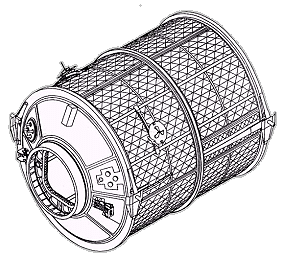 |
 |
 |
 |
 |
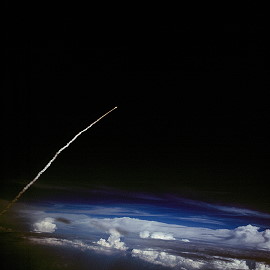 |
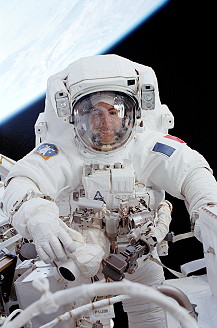 |
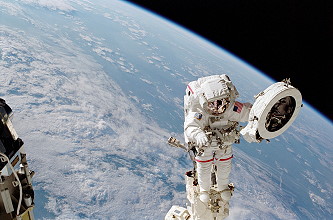 |
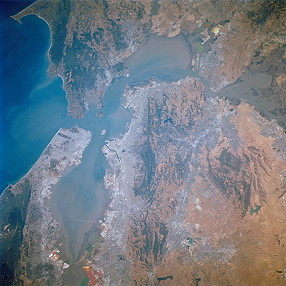 |
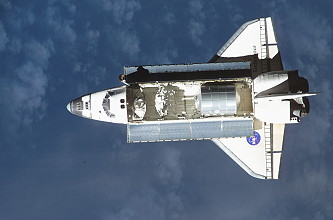 |
 |
 |
 |
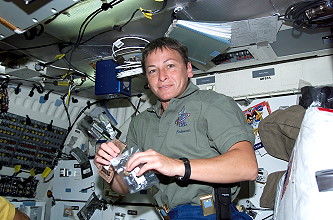 |
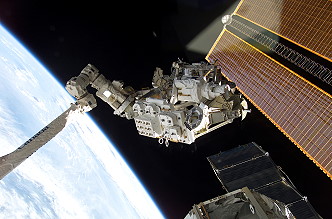 |
 |
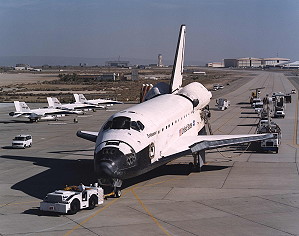 |
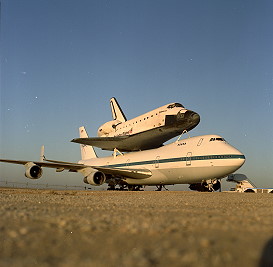 |
|
more EVA photos |
|
| © |  |
Last update on March 27, 2020.  |
 |